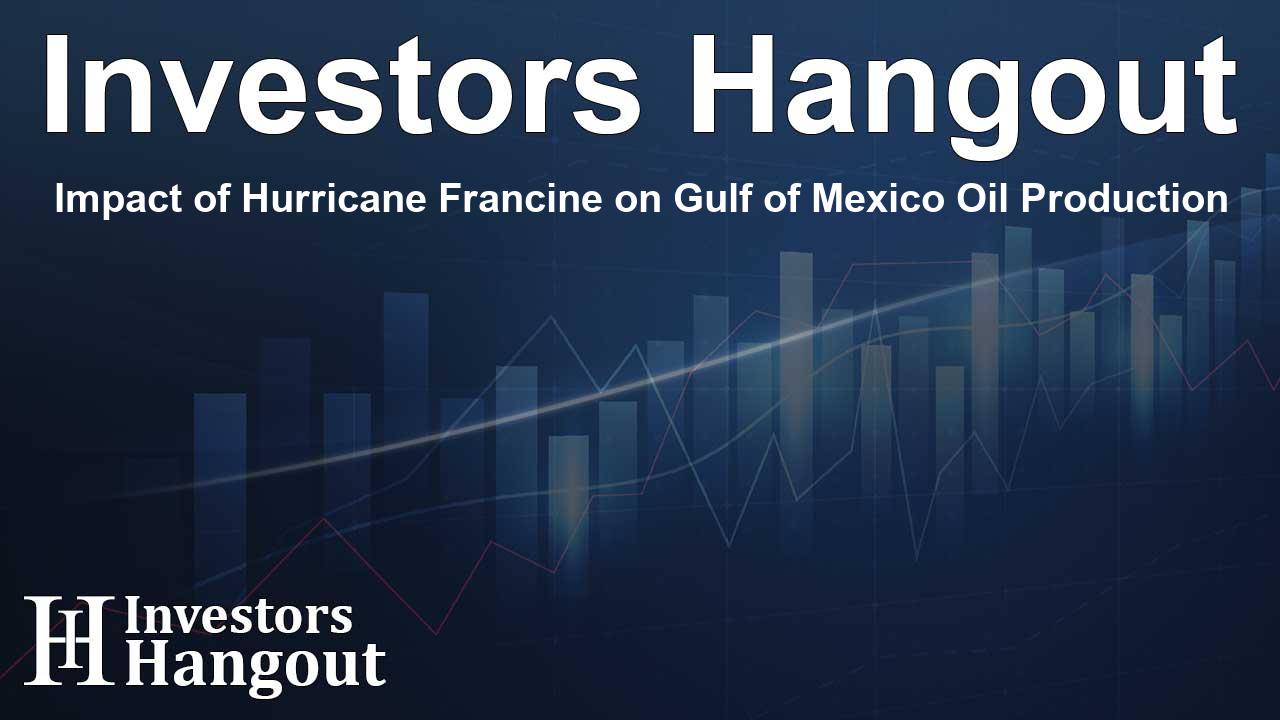Impact of Hurricane Francine on Gulf of Mexico Oil Production

Significant Disruptions in Gulf Oil Production
HOUSTON - Recent reports indicate that nearly 30% of oil production in the U.S. Gulf of Mexico is currently offline following the impact of a powerful storm. The Bureau of Safety and Environmental Enforcement (BSEE) has documented that production losses are substantial, with a staggering 1.82 million barrels of crude oil and 4.12 billion cubic feet of natural gas lost this week due to the effects of Hurricane Francine.
Storm Impact on Production Facilities
The storm made landfall with winds reaching up to 100 miles per hour, posing a serious threat to oil and gas infrastructure in the Gulf region. This unexpected weather event led to significant challenges for energy producers, especially affecting operations both offshore and onshore. The resulting conditions caused over 522,000 barrels of oil production to remain offline as of Saturday, accompanied by 755 million cubic feet of natural gas unable to flow to market.
Worker Evacuations and Platform Status
Approximately 14% of the oil and gas platforms were left unmanned as workers evacuated in anticipation of the storm. While the number of evacuated offshore platforms peaked at 171 earlier in the week, it has now diminished as crews assess damage and begin to restore operations. Currently, 52 platforms are still unmanned, indicating the scale of the disruption and the ongoing effects of the storm.
Chevron's Response to the Storm
Two platforms operated by Chevron are currently functioning at reduced capacity due to an interruption at an onshore gas facility. The infrastructure issues at Jack/St. Malo and Big Foot operations are expected to be resolved soon, allowing for the resumption of full production capabilities. Despite these challenges, Chevron has reported that no significant damage was sustained at its Anchor and Tahiti platforms, which were temporarily shut down as a precaution.
Looking Forward
As energy companies work diligently to restore production and return workers to platforms, the focus remains on ensuring safety and assessing the full extent of the storm’s impact. It remains clear that while the storm has derived substantial losses in production, the industry is set on a path toward recovery, indicating resilience in the face of natural challenges.
Frequently Asked Questions
What caused the disruption in oil production in the Gulf?
The disruption was caused by Hurricane Francine, which made landfall with severe winds and impacted oil and gas infrastructure.
How much oil production is currently offline?
Approximately 30% of U.S. Gulf oil production is currently offline due to the storm's effects.
What are Chevron's operations status following the storm?
Chevron reported that some platforms are operating at reduced rates due to an onshore gas plant disruption but expects full production to resume soon.
How many platforms are unmanned after the storm?
Currently, 52 oil and gas platforms are unmanned, which is about 14% of the total in the region.
What was the impact of Hurricane Francine on natural gas production?
The storm is responsible for leaving 755 million cubic feet of natural gas offline as energy companies assess and restore operations.
About Investors Hangout
Investors Hangout is a leading online stock forum for financial discussion and learning, offering a wide range of free tools and resources. It draws in traders of all levels, who exchange market knowledge, investigate trading tactics, and keep an eye on industry developments in real time. Featuring financial articles, stock message boards, quotes, charts, company profiles, and live news updates. Through cooperative learning and a wealth of informational resources, it helps users from novices creating their first portfolios to experts honing their techniques. Join Investors Hangout today: https://investorshangout.com/
Disclaimer: The content of this article is solely for general informational purposes only; it does not represent legal, financial, or investment advice. Investors Hangout does not offer financial advice; the author is not a licensed financial advisor. Consult a qualified advisor before making any financial or investment decisions based on this article. The author's interpretation of publicly available data shapes the opinions presented here; as a result, they should not be taken as advice to purchase, sell, or hold any securities mentioned or any other investments. The author does not guarantee the accuracy, completeness, or timeliness of any material, providing it "as is." Information and market conditions may change; past performance is not indicative of future outcomes. If any of the material offered here is inaccurate, please contact us for corrections.